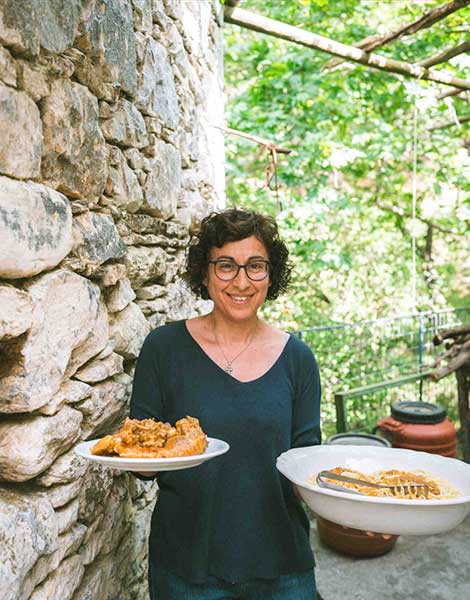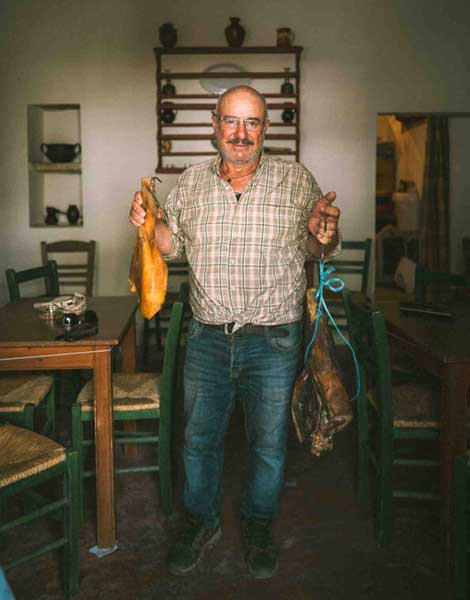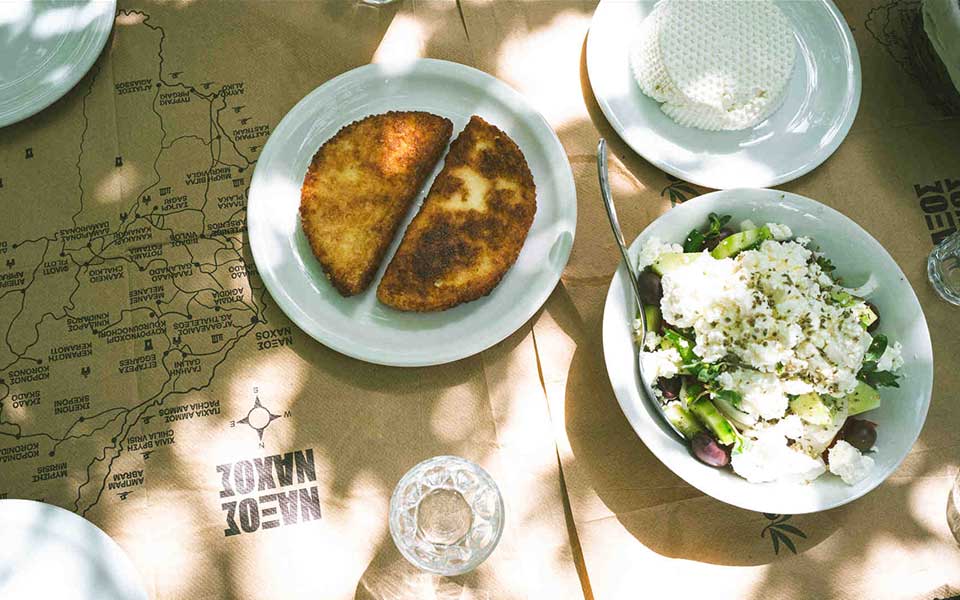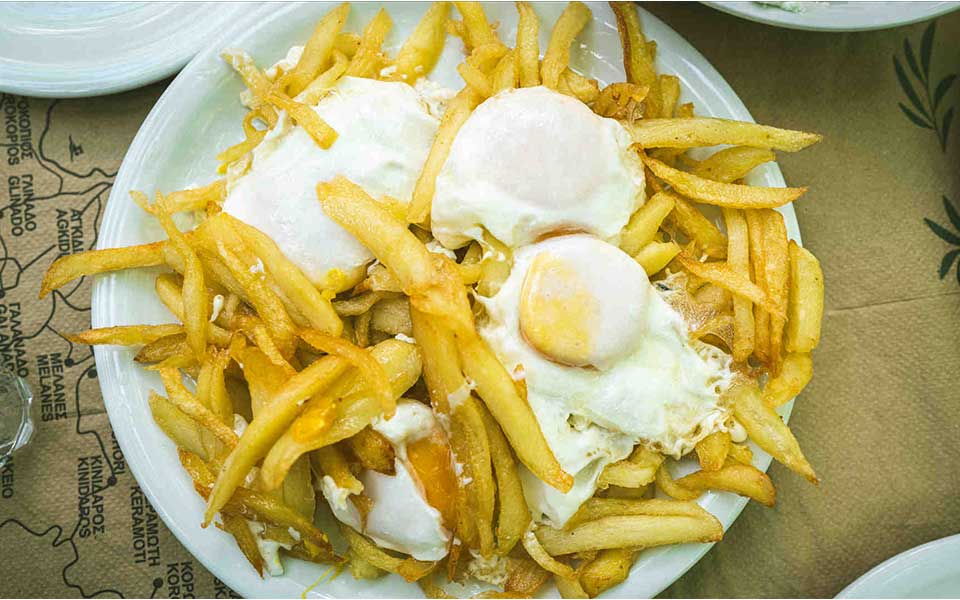“What goes down must come up,” I thought as I dashed through Danakos’ narrow alleys with the energy of a fifteen-year-old. The village, regarded as one of Naxos’ oldest, is built amphitheatrically in a ravine that flows from between two mountain slopes on Mount Zas. Many of its residents continue to work in livestock farming and agriculture, and they are well-known for their rhyming skills.
A small family taverna, owned and operated by Maria Amorgianou, Nikos Tsafos, and their children Dimitris and Eleni, has been operating for the past 27 years on the last step of the village before reaching the verdant ravine. They named it “To Gefyraki” (The Little Bridge) because the small building, Nikos’ grandfather’s old house that was converted into a taverna, is perched right on top of the little bridge that connects the ravine to the smaller streams that flow through the village.

© Michael Pappas

© Michael Pappas
The family runs a small farm with one pig, 300 goats and sheep, and vegetable gardens that supply fresh ingredients for the taverna. Creamy mizithra and xynomizithra cheeses, as well as soft anthotiro and manouri cheese, are made from the animals’ milk. Every year, they set aside a leg of pork to make traditional Naxos-style cured ham for the restaurant. They will only purchase ingredients if they run out during the peak tourist season in August, and only from local producers they know and trust.

© Michael Pappas
The charcoal grill is in the backyard, where the world’s luckiest griller gets to grill prime cuts in a magical setting surrounded by cool, dense vegetation and the babbling waters of the stream. They serve delicious traditional taverna fare at the few tables shaded by plane trees and one maple. They serve delicious traditional taverna fare at the few tables, under the shade of a single maple tree and a few plane trees.
First, they brought us local wine; exquisitely fresh mizithra cheese; a salad with ripe tomatoes and feather-light xynomyzithra; a manouri saganaki that will have you rubbing your eyes, then your hands, and finally your belly; tender baby goat in red sauce with pasta and grated arseniko cheese; and an out-of-this-world dish of baby goat with lemon sauce served with fries soaked in its rich juices. “We used to get a lot of water here, but there hasn’t been any rain for the past two years,” Nikos explained as Maria prepared the final delicacy, her famous egg potatoes with yolks as golden as the sun. On the long, slow climb back up, I passed the time thinking that if they also served wine from the Cyclades, I would still be in Danakos.

© Michael Pappas
P.S. 1: I later discovered that there is another road that allows you to reach the opposite bank of the stream by car, avoiding all the climbing. However, if you go by that route, you will miss the opportunity to stroll through the picturesque village.
P.S. 2: If you visit, you should definitely stop by the Church of Zoodochos Pigi in front of the stream, as well as the Monastery of Fotodotis, which celebrates with a festival on August 6th.
This article was previously published in Greek at gastronomos.gr.











